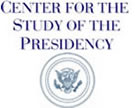A top Chinese auto executive predicted Thursday at a conference in Chengdu that annual auto sales in China would reach 40 million vehicles by 2020, more than twice the peak of the American market before the recent economic downturn. That could add to China’s energy-efficiency challenges, as more people drive cars rather than use mass transit.
Mr. Zhang said the country still hoped to reach a self-imposed goal of reducing “energy intensity” by 20 percent over the five-year period ending at the end of 2010. After strong progress from 2007 to 2009, this year saw some slippage, Mr. Zhang said at a news conference.
“We still have a lot of challenges,” he said. “We should not be too optimistic about this.”
During the first quarter the trend moved in the wrong direction as energy intensity — measured as energy use per unit of output — actually increased, Mr. Zhang said. Analysts say that this mainly reflected infrastructure investments associated with China’s substantial stimulus program in 2008 and 2009.
In response, China’s cabinet in May passed a series of measures to cut energy use, including closing thousands of factories with outdated equipment. Those measures helped China reverse the trend, Mr. Zhang said.
Some of the measures are continuing, including a recent announcement that China’s largest steel producer, the Hebei Iron and Steel Group, would cut production 6 percent. The measures are already being felt overseas; in a report Thursday, HSBC said the measures would help bolster global steel prices by limiting the supply of steel from China.
China’s struggles show that the country is determined to make progress, said Deborah Seligsohn, a Beijing-based senior fellow at the World Resources Institute. In years past, officials might have doctored statistics to get the result they wanted, but now they want the numbers to reflect real change, she said.
“They are treating this incredibly seriously,” Ms. Seligsohn said. “Local officials are expressing anxiety about not meeting the targets.”
The long-term solution is for China to move beyond its current structure as a low-cost, high-resource economy, Mr. Zhang said. “The essential issue for us is whether we are able to move from a low-end to a high-end and to a science-based and knowledge-based economy,” he said.
Beijing has aimed at 16 major areas for increased efficiency and has channeled more than $300 million into electric cars. Over all, China has invested $1.5 billion in green technologies over the last five years, he said.
But critics say China’s green-energy programs so far are focused more on exporting products like solar panels, rather than domestic use of such technology. The American-based United Steelworkersunion filed a detailed petition last week with the United States government, accusing the Chinese government of providing export subsidies for clean-energy equipment in violation of the World Trade Organization’s prohibition on export subsidies.
Mr. Zhang said that China’s clean-energy policies did not violate W.T.O. rules. “After China acceded to the W.T.O., every decision has been in line with W.T.O. rules, and this is no exception,” he said.
While China is investing heavily in electric cars, they are still years away from reaching the market in numbers large enough to affect overall Chinese energy consumption, executives said Thursday at the Global Automotive Forum in Chengdu.
Xiao Guopu, vice president of the Shanghai Automotive Industry Corporation, one of China’s largest automakers, said his company planned to sell 20,000 plug-in hybrids in 2012 and 50,000 in 2015, with electric cars still being developed.
Wang Dazong, the president of Beijing Auto, said China’s vehicle market would rise to 40 million in 2020 from about 17 million this year.
By comparison, the American market leveled off at 16 million to 17 million in its best years before the current economic downturn and is on track for closer to 12 million this year, said Yale Zhang, a vehicle market forecaster in Shanghai, who added that he expected the market in China to be closer to 30 million in 2020.






